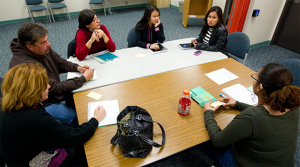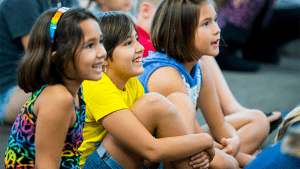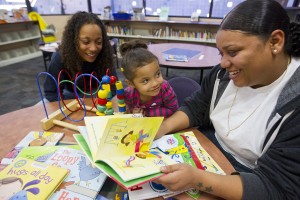 This is not surprising to anyone who loves libraries, of course!
This is not surprising to anyone who loves libraries, of course!
The Institute of Museum and Library Services (IMLS) posted an article about the study, which researched the impact of both public libraries and museums.
The multi-year, multi-market study found the presence and usage of public libraries and museums to be positively associated with multiple dimensions of social wellbeing—in particular, community health, school effectiveness, institutional connection, and cultural opportunity.
They found that libraries and museums impact communities similarly, and noted the roles that they play:
“This study reveals the deeper, more significant roles that museums and libraries play in communities—that which go far beyond art hanging on walls and books lining shelves,” said Don Hinkle-Brown, President & CEO of Reinvestment Fund. “They are trusted institutions, safe spaces, and a place to access critical public health, social services, and technology resources. They are a reflection of what happens when inclusion and belonging are prioritized. Museums and libraries are indispensable connective tissue that keeps healthy communities together.”
 IMLS summarized some of the findings from the study:
IMLS summarized some of the findings from the study:
- Libraries and museums are increasingly critical actors supporting social service provision in the communities they serve. In many places these institutions are stepping into gaps left by depleted, or absent, public sector supports for education, public health, and social services. The roles they are taking on to fill these gaps often stretch their organizational capacity and missions in an effort to address resident needs that have historically been served by the public sector.
- Libraries and museums are trusted institutions in their communities. They are places people go to get information they know is reliable. They are places people go to meet other people, learn new things, engage with the institutions’ collections, and to enjoy themselves and the company of others. These trusted community institutions function as a “third place” (or “third space”) where people congregate outside of home or work in informal ways that build community.
- Libraries and museums can be catalysts in their communities to promote racial equity and inclusion. The reality that these institutions are highly networked in their communities, widely perceived as trusted organizations, and hosts to diverse populations who circulate through their spaces make libraries and museums potential catalysts to advance racial equity and inclusion in their communities.
- It’s all about the networks. Libraries and museums are critical components of institutional and social networks. In smaller, more remote areas, they are often indispensable resources for local residents. The value these institutions provide flows from the connections they facilitate between individuals, groups, and other organizations. The vast majority of libraries and museums are not large employers and will never provide the muscle to significantly drive local economies, but they are indispensable connective tissue that keeps healthy communities together.
 All of us who use, work in, and love libraries know these things of course. We see it everyday.
All of us who use, work in, and love libraries know these things of course. We see it everyday.
At Pima County Public Library, we see this work reflected in our Community Impact Plan, in our Mission, Vision, and Values, and in the services and programs we provide.
Even though we've had to scale back during the pandemic, rest assured we will offer a full array of the services you love in the future.

